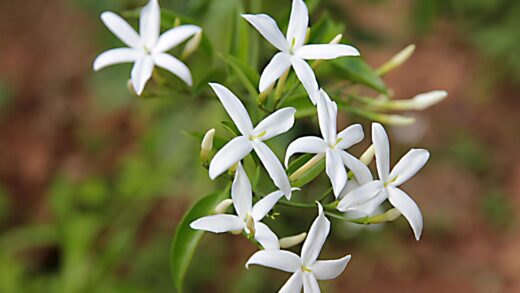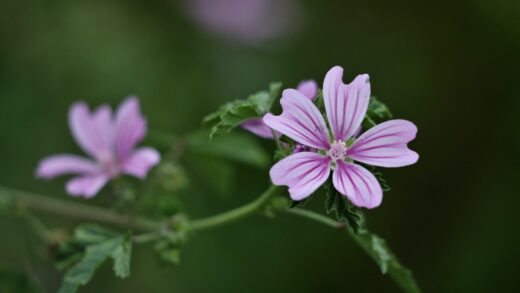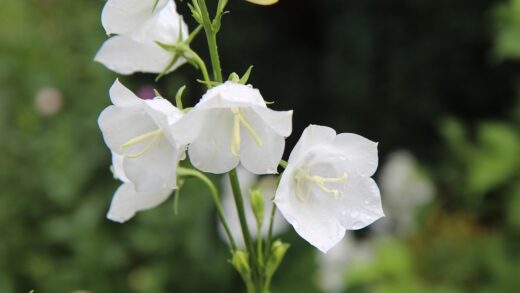The single most critical factor for ensuring a thriving, floriferous Burnet Rose is providing it with an abundance of direct sunlight. This species is an uncompromising sun-lover, a trait directly linked to its natural habitat on open, windswept coastal dunes and exposed heathlands where shade is a rarity. To achieve optimal health, vigorous growth, and the spectacular burst of spring flowers for which it is known, the Burnet Rose requires a location that receives a minimum of six to eight hours of direct, unfiltered sunlight each day. Anything less than this will result in a plant that may survive, but will certainly not perform to its full potential, leading to sparse growth and significantly reduced blooming.
A position in full, open sun serves multiple purposes that go beyond simply fuelling photosynthesis. The intense light promotes the development of strong, sturdy canes that can support the profusion of blooms and resist damage from wind. It is this energy from the sun that powers the production of flowers, and a lack of sufficient light is the most common reason for a Burnet Rose failing to bloom well. The more sun the plant receives, the more flowers you can expect to see in its glorious, albeit brief, flowering season.
Furthermore, ample sunlight plays a crucial role in disease prevention, a key attribute of this low-maintenance shrub. The sun’s rays and the associated warmth and air movement help to quickly dry morning dew and rainwater from the fern-like foliage. This rapid drying time is critical because it deprives fungal pathogens, such as black spot and powdery mildew, of the prolonged periods of moisture they need to germinate and infect the leaves. A plant in a shady, damp location is far more susceptible to these issues.
When selecting a planting site, it is therefore imperative to observe the path of the sun across your garden throughout the day. Identify the spots that are free from the shadows cast by buildings, trees, or other large shrubs. A south-facing or west-facing aspect is often ideal, as these locations typically receive the most intense and longest duration of sunlight. Prioritizing light over all other factors, such as soil richness, will ultimately lead to a much healthier and more beautiful Burnet Rose.
The importance of full sun
The term “full sun” in horticulture is generally defined as receiving six or more hours of direct, unobstructed sunlight per day. For the Burnet Rose, this should be considered a minimum requirement rather than a lofty goal. This plant truly thrives when bathed in sunlight for eight or more hours daily. This high light requirement is deeply ingrained in its genetic makeup, adapted over millennia to outcompete other vegetation in harsh, open landscapes. In a garden setting, this translates to a need for a premier, unshaded location.
More articles on this topic
The quantity and quality of light have a direct impact on the plant’s flowering. Flower bud initiation and development are energy-intensive processes that are fuelled by photosynthesis. In insufficient light, the plant will prioritize its survival, focusing its limited energy resources on producing foliage to capture more light, rather than on reproduction (flowering and setting hips). This is why a Burnet Rose planted in a partially shaded spot may look relatively healthy in terms of its leaves but will produce very few, if any, flowers.
Sunlight also influences the overall form and habit of the shrub. In a full sun location, the Burnet Rose will grow into a dense, compact, and well-branched shrub. The stems will be strong and self-supporting. In contrast, a plant grown in insufficient light will become “etiolated,” which means it will stretch towards the available light source. This results in a plant that is sparse, leggy, and weak, with long, spindly canes that may be unable to support themselves, leading to a floppy and unattractive appearance.
Consider the seasonal changes in sunlight when choosing a location. The angle of the sun is much lower in the sky during the spring and autumn compared to the height of summer. A spot that is sunny in June might be in considerable shade from a house or an evergreen tree in May, just when the rose is developing its flower buds. Therefore, it is important to choose a site that receives direct sun throughout the growing season, from mid-spring through to early autumn.
Consequences of insufficient light
Planting a Burnet Rose in a location with insufficient light will lead to a series of predictable and disappointing outcomes. The most immediate and noticeable consequence will be a dramatic reduction in flowering. A plant in partial shade might produce a handful of blooms, but it will never achieve the breathtaking, sheet-of-white effect that a sun-drenched specimen can produce. In heavy shade, the plant is unlikely to produce any flowers at all, defeating one of the primary purposes of growing it.
More articles on this topic
Beyond the lack of flowers, the plant’s overall health and vigour will be compromised. A lack of sunlight puts the plant under chronic stress, making it more vulnerable to pests and diseases. The foliage will be unable to dry properly in a shady, still environment, creating an open invitation for fungal diseases like powdery mildew and black spot to take hold. A plant that is constantly fighting off disease will have little energy left for robust growth.
The physical structure of the rose will also suffer. As the plant stretches for light, its stems become elongated and weak, a condition known as etiolation. This leggy growth is not only unattractive but also structurally unsound. The canes will be thinner and less able to withstand wind or the weight of snow, making them prone to breakage. The natural, dense, thicket-forming habit of the rose will be lost, replaced by a sparse and open form that offers little of the plant’s characteristic charm.
Ultimately, while a Burnet Rose might tolerate a partially shaded spot for a time, it will be a shadow of its potential self. The growth will be poor, the flowers will be few, the disease resistance will be lowered, and the overall habit will be weak and straggly. If your garden lacks a location with at least six hours of direct sun, it is unfortunately not a suitable environment for this particular rose species, and it would be better to choose a different, more shade-tolerant shrub.
Sunlight and disease resistance
The strong correlation between sunlight and the Burnet Rose’s renowned disease resistance cannot be overstated. Many of the most common rose diseases are caused by fungi, and these pathogens have a very specific set of requirements to thrive, with moisture being the most critical. Fungal spores are ubiquitous in the environment, but they can only germinate and infect a plant when they have a film of water to sit in for a prolonged period.
A location in full sun acts as a natural fungicide. The direct rays of the sun, particularly the morning sun, work quickly to evaporate dew and rainwater from the surface of the leaves. This significantly shortens the window of opportunity for fungal spores to successfully establish an infection. In a shady, damp spot, leaves can remain wet for many hours, creating the perfect breeding ground for diseases like black spot.
Good air circulation, which is naturally better in an open, sunny location compared to a crowded or shaded one, further enhances this protective effect. The movement of air helps to whisk moisture away from the foliage, keeping it dry. This combination of direct sun and moving air is the Burnet Rose’s primary defence mechanism against disease, and it is far more effective and sustainable than any chemical spray.
Therefore, when you provide your Burnet Rose with the ample sunlight it craves, you are not just encouraging it to flower; you are actively bolstering its natural defences. You are creating an environment where the plant is not only stronger and more vigorous but also less likely to encounter the health problems that can plague other roses. This is the very essence of the “right plant, right place” principle of successful gardening.
Site selection strategies
To ensure your Burnet Rose receives the light it needs, a careful assessment of your garden is the first step. Before you even purchase the plant, spend some time observing your property on a sunny day. Take note of which areas receive sun in the morning, at midday, and in the afternoon. Look for the “all-day sun” spots that are free from the shadows of your house, garage, fences, and large trees or shrubs.
A south-facing aspect is generally the sunniest location in a garden in the Northern Hemisphere. This side of your property will receive the most direct and intense sunlight for the longest duration throughout the day. A west-facing location is also an excellent choice, as it will capture the strong afternoon sun. An east-facing spot can work if it is very open and receives sun for the entire morning, but be aware that it may not reach the six-to-eight-hour threshold if the afternoon sun is blocked.
Be mindful of future changes to your landscape. That small sapling you planted a few years ago might grow into a large tree that will eventually cast significant shade on your chosen spot. Consider the mature size of all surrounding plants when siting your rose. Also, think about the plant’s own growth habit. The Burnet Rose will spread to form a thicket, so ensure its sunny location is also large enough to accommodate its mature footprint without it encroaching on other areas or being shaded by nearby plants.
If you find your garden is mostly shaded, you may need to be creative or make some changes. Is it possible to prune the lower limbs of a large tree to let in more light? Can a particular shrub be moved to a different location to open up a sunny spot? If you are unable to provide the necessary amount of sun, it is better to acknowledge this limitation and choose a plant that is well-suited to the conditions you have, rather than trying to force a sun-loving plant like the Burnet Rose to struggle in the shade.
📷No machine-readable author provided. Svdmolen assumed (based on copyright claims)., CC BY-SA 3.0, via Wikimedia Commons


















